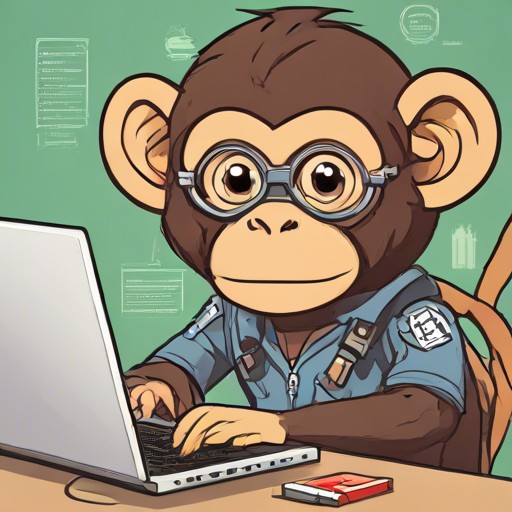The Invisible Helper: How AI is Transforming Our Daily Routines

Welcome to the dynamic landscape of the digital age, where Artificial Intelligence (AI) transcends science fiction to become a tangible, integral part of our everyday existence. This blog post delves deep into this transformative journey, spotlighting the role of AI assistants in revolutionizing our cognitive tasks. Picture an assistant that not only boosts productivity but also aids in intricate decision-making and orchestrates our daily activities with exceptional proficiency. We’re about to explore how these advanced technologies enhance our cognitive prowess and transform our work patterns, providing insights and solutions once considered beyond reach.
My Journey with AI
My personal journey with AI began as a hobby last year, exploring local Large Language Models (LLMs) before the advent of ChatGPT and the OpenAI API. Initially, these tools didn’t quite hit the mark for me. My focus then shifted to image processing AI tools like Stable Diffusion, which seemed more advanced than the LLMs at the time. The quality of the images and the existence of remarkable commercial tools like Midjourney fueled my interest. However, the game changed with the release of ChatGPT by OpenAI. This accessible platform, especially with the leap from GPT-3.5 to GPT-4, brought LLMs into the mainstream, proving their practical utility. As I experimented with ChatGPT, I encountered limitations but found that courses on Prompt Engineering from Coursera significantly enhanced its effectiveness. The evolution didn’t stop there; the introduction of chat functionality in GitHub Copilot was a turning point, making it an invaluable tool for coding. By learning and applying new frameworks and languages simultaneously, my workflow accelerated dramatically. The traditional approach of absorbing crash courses and documentation before coding shifted to an immediate, hands-on process, although it naturally involved a fair amount of refining and refactoring.

Evolving with AI: From Code Solutions to Architectural Focus
As my journey with AI and programming tools evolved, the role of GitHub Copilot emerged as a game-changer in my development process. Initially, my interactions with ChatGPT revolved around dialogues to unravel coding solutions. This approach was fruitful, but the advent of GitHub Copilot, especially its seamless integration with the Visual Studio Code (VS Code) IDE, marked a significant shift in my workflow. GitHub Copilot, leveraging the power of GPT-4 and free from usage constraints, is a tool specifically crafted for coding. It offers an accessible and efficient platform for developers, streamlining the coding process.
The introduction of Copilot altered my focus in software development. Rather than searching for coding solutions, I began to concentrate more on the architecture of projects, contemplating how various components should interact and function. This shift in focus allowed me to select technologies based on their suitability for the task at hand, rather than being limited by my previous experience with them. As a result, I could rapidly adapt to and implement different technologies with the assistance of AI.
This newfound flexibility led to significant changes in my professional and personal projects. In my professional capacity, it facilitated a transition to using Rust, a language I had no prior experience with. The decision wasn’t hindered by my lack of familiarity with Rust, as AI tools like GitHub Copilot provided the necessary support to bridge the knowledge gap quickly.
On a personal note, this approach also influenced how I developed this blog. I initially started with Solid start, but given that it was still in beta, I eventually switched to using the Astro framework. This decision was made easier by the confidence that, with AI assistance, I could effectively navigate and utilize a new frameworks despite having no previous experience with it. The journey with AI in programming has thus transitioned from finding specific code snippets to empowering a broader, more strategic perspective in software development.
Conclusion: Embracing AI for a Boundless Future in Software Development
As we stand at the crossroads of technological innovation, my journey with AI tools like ChatGPT and GitHub Copilot exemplifies a significant shift in the paradigm of software development. This evolution from seeking specific coding solutions to focusing on overarching architectural designs signifies a new era where the boundaries of innovation are continually expanding.
The integration of AI into the development process has not only streamlined the way we code but has also democratized access to advanced technologies. It enables developers, irrespective of their prior experience with a specific technology, to venture confidently into new territories. This leap is evident in my professional transition to Rust and the development of this blog using the Astro framework, tasks I undertook without prior experience in these specific areas.
GitHub Copilot, in particular, has transformed from a coding assistant to an invaluable partner in conceptualizing and executing projects. It facilitates a deeper understanding and implementation of various technologies, allowing for a more agile and adaptable approach to software development.
In conclusion, the journey with AI in software development is an ongoing adventure, filled with limitless possibilities. It’s a testament to how AI is not just augmenting our capabilities but also reshaping the landscape of what we can achieve. As we continue to harness these tools, we step into a future where our creative and technological potentials are boundless, promising an exciting era of innovation and discovery in software development.